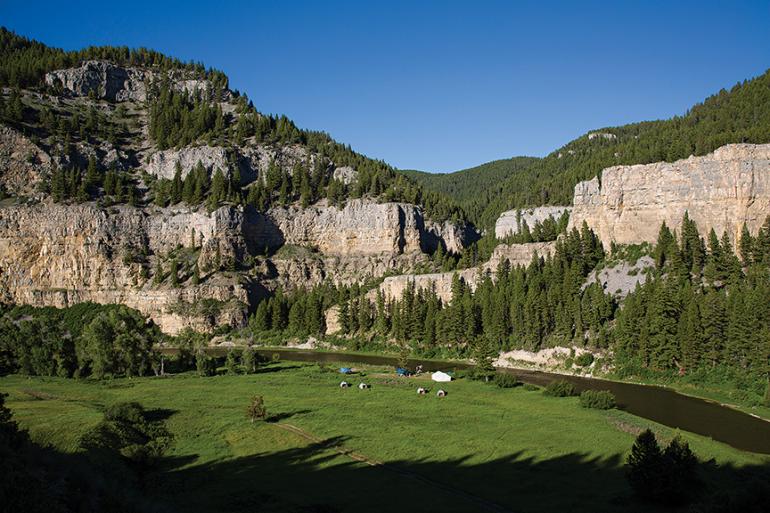Copper Conflict
A Montana treasure under threat.
The disingenuous nonsense spewed forth by the mining industry over the years would be laughably pathetic if its message was not so dire for Montana’s wild places. The latest venal insult comes from a Canadian firm of brief lineage calling itself Tintina Resources. Last spring, they submitted an application to the Montana Department of Environmental Quality (DEQ) for the Black Butte Copper Project, located on private land about one mile from the Smith River tributary of Sheep Creek. DEQ officials will study potential environmental effects prior to rendering a decision on whether or not to approve the application for the mine, which would be located about 20 miles from White Sulphur Springs.
Save Our Smith (SOS), an organization formed in opposition to the mine, describes the Smith this way: “Montana’s Smith River is renowned worldwide for its clean water, rugged canyon scenery, and blue-ribbon trout fishing. The Smith is Montana’s only permitted recreational river, the permitted section winding 59 miles through a remote canyon in the Big Belt Mountains. Montana Fish, Wildlife & Parks classifies the Smith River’s fishery as high-value, with bountiful populations of rainbow, brown, westslope cutthroat, and brook trout. The canyon walls of the Smith also boast some of the best examples of Native American pictographs in Montana.”
Tintina, headquartered in Vancouver and partnered with Australian-based Sandfire Resources, claims the site holds one of the highest-grade copper deposits on the planet with more than 11 million tons of ore beneath the surface. Recreational use of the river generates more than $10 million in annual revenue. The permitted portion of the river is managed as a state park, with only one put-in and one take-out. The river and its tributaries provide crucial habitat and spawning grounds for regional trout fisheries, with the Sheep Creek drainage accounting for over half of tributary spawning of rainbow trout in the entire Smith River drainage. Rainbows have been known to travel nearly 200 miles round-trip from the Missouri River to spawn here.
Floating the Smith is a calming, regenerating, and at times humbling experience. Drifting beneath towering limestone cliffs, camping on forested banks, or catching large brown trout as abundant and varied wildlife look on with mild curiosity is a natural process for stepping out of linear time. According to SOS, the proposed mine is of particular concern because the copper extraction would involve digging into sulfide minerals, which when exposed to air and water can form sulfuric acid in a process known as acid mine drainage. Acid mine drainage is highly toxic to fish and other aquatic life. Furthermore, groundwater pumping from mining activities could potentially lower the water table and create a “cone of depression” that extends to the Sheep Creek alluvium, posing a threat to adjacent streamflows. The Smith River and Sheep Creek suffer from low flows during most years, putting pressure on downstream water users and preventing the fishery from reaching its potential. Captured groundwater will contain arsenic and other toxic substances that pose another serious threat to water quality.
Not mine, Ours. from Trout Unlimited on Vimeo.
Last October, my wife Ginny and I spent several days enjoying the Sheep Creek drainage—she photographed the land while I fished. The aspens were blazing yellow-gold. The creeks were icy clear and full of riotously colored westslope cutthroat and brook trout. Deer and elk wandered the forest while red-tailed hawks, eagles, and wandering vultures cruised the thermals. At night, the sky was sliced by the glowing white band that is the Milky Way, only slightly diminished by a rising full moon after midnight. Nighthawks boomed above us.
This is a truly glorious, peaceful place, and Tintina’s proposed mine would be located just a few miles from where we camped.
Check out the Save Our Smith website at saveoursmith.com for more information.











